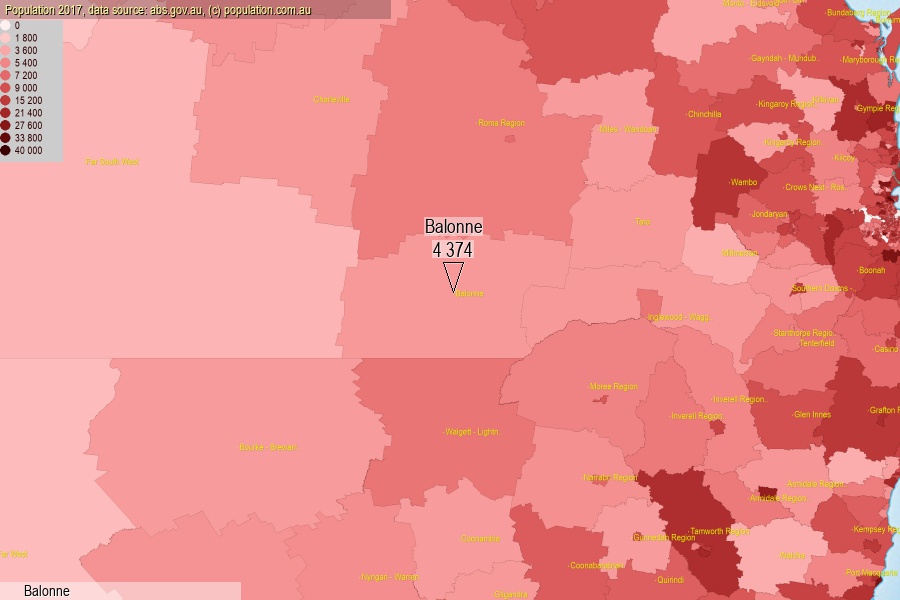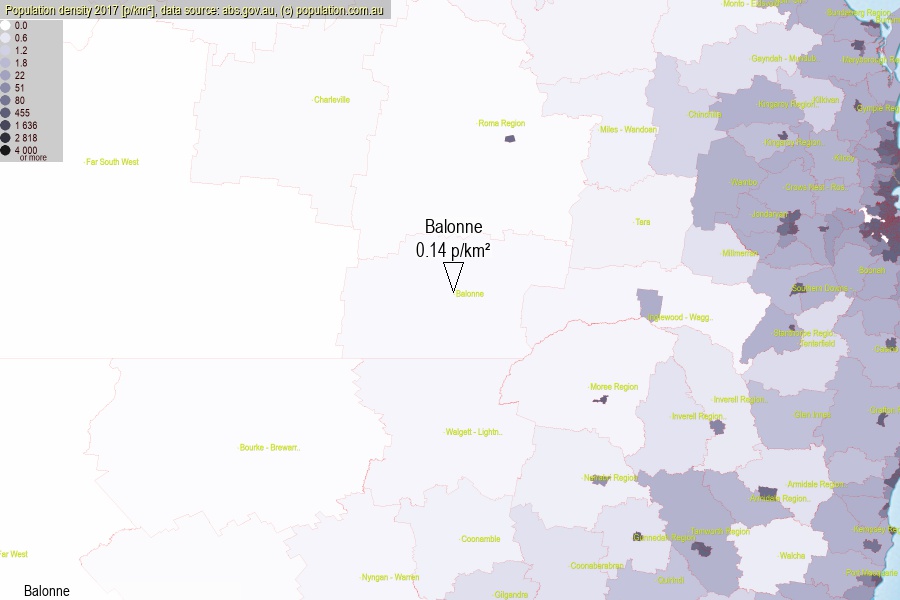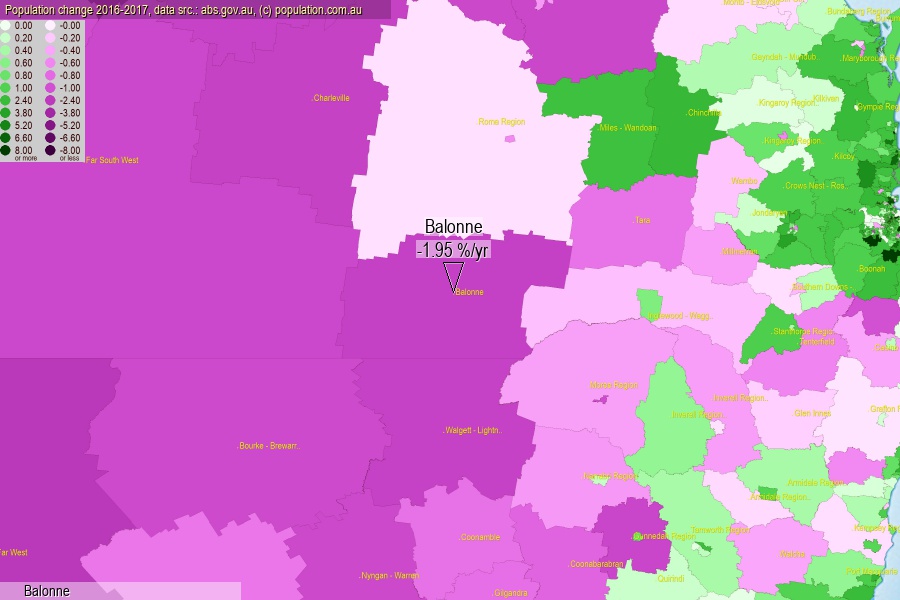 population.com.au
population.com.auLast official estimated population of Balonne (as Statistical Area Level 2) was 4 374 people (on 2017-06-30)[2]. This was 0.02% of total Australian population and 0.088% of QLD population. Area of Balonne is 31 103.70 km², in this year population density was 0.14 p/km² . If population growth rate would be same as in period 2016-2017 (-1.95%/yr), Balonne population in 2025 would be 3 736. [0]



Click to enlarge. Balonne is located in the center of the images.
Population [people], population density [p./km²] and population change [%/year] [2]
View borders » (new window) [4]
[1991-1992] -0.92 %/Yr.
[1992-1993] -2.02 %/Yr.
[1993-1994] -3.45 %/Yr.
[1994-1995] -3.31 %/Yr.
[1995-1996] -1.24 %/Yr.
[1996-1997] +2.26 %/Yr.
[1997-1998] +3.25 %/Yr.
[1998-1999] +2.49 %/Yr.
[1999-2000] +3.17 %/Yr.
[2000-2001] +2.45 %/Yr.
[2001-2002] -2.50 %/Yr.
[2002-2003] -3.04 %/Yr.
[2003-2004] -3.36 %/Yr.
[2004-2005] -2.44 %/Yr.
[2005-2006] -2.54 %/Yr.
[2006-2007] +0.13 %/Yr.
[2007-2008] +0.55 %/Yr.
[2008-2009] +0.56 %/Yr.
[2009-2010] +0.42 %/Yr.
[2010-2011] +0.60 %/Yr.
[2011-2012] -1.54 %/Yr.
[2012-2013] -0.23 %/Yr.
[2013-2014] -1.05 %/Yr.
[2014-2015] -2.45 %/Yr.
[2015-2016] -3.23 %/Yr.
[2016-2017] -1.95 %/Yr.
[0] Calculated with linear interpolation from officially estimated population
[1] Read more about SA2 and Australian Statistical Geography Standard (ASGS) on abs.gov.au
[2] Population data from Australian Bureau of Statistics (Population and density: 2017; change: 2016-2017)
[3] Digital Boundaries: Australian Statistical Geography Standard (ASGS) 2016.
[4] Border coordinates are simplifyed using Ramer-Douglas-Peucker algorithm.